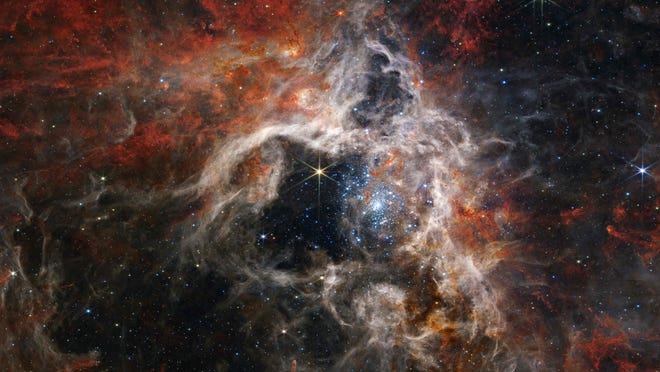When searching for signs of life on planets outside our solar system, scientists often look for the presence of chemical compounds like oxygen or methane. But a new study argues that nitrous oxide (N2O) – commonly known as laughing gas – should be considered, too.
In a study published Tuesday in The Astrophysical Journal, researchers from the University of California, Riverside, Purdue University, American University, the Georgia Institute of Technology and the NASA Goddard Space Flight Center outline how N2O is a “compelling exoplanet biosignature gas.”
Biosignatures are a range of characteristics or substances that can serve “as evidence for past or present life,” NASA says. That can include gases found in a planet’s atmosphere.
“There’s been a lot of thought put into oxygen and methane as biosignatures. Fewer researchers have seriously considered nitrous oxide, but we think that may be a mistake,” Eddie Schwieterman, one of the study’s authors and an astrobiologist at UC Riverside, said in a university news release.
Did life ever exist on Mars? NASA’s Perseverance rover finds more organic matter in rocks
James Webb Space Telescope:New images showcase Neptune and its rarely seen rings
Most might know laughing gas for its use in anesthesia and treating severe pain in humans, but that’s not why N2O is catching the attention of astrobiologists. Living things also can produce N2O. Microorganisms, for example, transform other nitrogen compounds into N2O, according to UC Riverside.
“Under the right conditions in the ocean, certain bacteria can convert those nitrates into N2O,” Schwieterman said. “The gas then leaks into the atmosphere.”
There’s not a lot of N2O in Earth’s atmosphere today, which makes some believe N2O could be difficult to detect across the universe. But Schwieterman noted that there were “periods in Earth’s history where ocean conditions would have allowed for much greater biological release of N2O,” which might be the case for some exoplanets.
What’s everyone talking about? Sign up for our trending newsletter to get the latest news of the day
In the study, the researchers created models to simulate how living organisms could produce N2O in “an Earthlike marine biosphere” while accounting for other possible nonlife sources of N2O on the hypothetical planet.
The researchers also calculated the amounts of N2O that could be detected by observatories like NASA’s James Webb Space Telescope. The Webb telescope “will allow us to probe the atmospheres of a small number of these temperate terrestrial exoplanets,” the researchers wrote, notably within TRAPPIST-1, a red dwarf star in the constellation Aquarius with a system of seven known planets.


